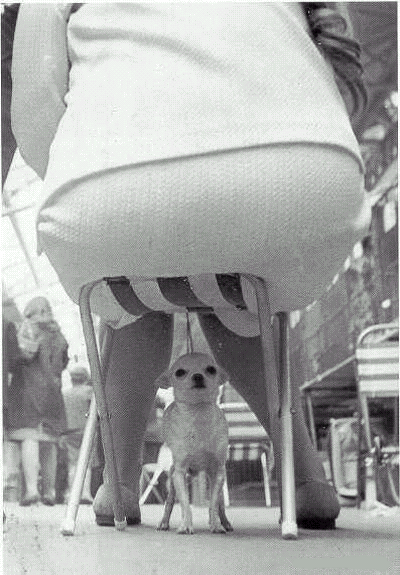
.

"[C]reationists do not believe that God made the animals and plants just as we see them today. For instance, when God made dogs, He didn’t make a poodle! After all, dogs like poodles are in fact degenerate mutants, suffering the effects of 6,000 years of the Curse."






This post from April, 2005
The following verbiage comes from the the web site of the Parson Russell Terrier Association of America (PRTAA) whose membership can best be described as having learned all they know about working terriers by talking to each other at ring side -- a kind of "blind leading the deaf" to PetSmart and back.
"The PRTAA is the Parent Club for the Parson Russell Terrier in America. Members of the club maintain the breed standard and in doing so protect the future of their terrier. Membership in the Association is open to those who support its goals and its ideal for the breed, and who honor the important height disqualifications incorporated in the Breed Standard to preserve the working abilities of the Parson. Those who feel that the Parson is primarily a small terrier suitable for hunting woodchuck in the United States should seek membership elsewhere. The PRTAA operates in full acknowledgment of the original purpose of the traditional Parson Russell Terrier as it was in Rev. Russell's day: to hunt red fox above and below ground; and to promote the distinctive type terrier bred by Rev. Russell."
So much for theory!
What makes the nonsense on the AKC web site particularly funny is that anyone who have ever worked fox, raccoon or groundhog in the United States can tell you that an adult groundhog is likely to have a larger chest than a fox. The table below is from Ken James' excellent book on working terriers in North America.
.
From today's NYT:
"Senator John McCain and a clutch of camera crews dropped by a gun shop here on Friday, but the presumptive Republican nominee completely avoided the guns.
Instead, Mr. McCain and his wife, Cindy, looked for a scale to weigh catfish – the St. Albans Gun & Archery shop didn’t have one – and bought a $40 fishing rod, plus bobbers, hooks, sinkers and bait.
The trip was an aperitif to Mr. McCain’s appearance before the annual convention of the National Rifle Association in Louisville, Ky., later today. Mr. McCain, who favors background checks for firearm sales at gun shows and pushed through campaign finance regulations that restricted political advertising by groups like the N.R.A., was once branded by the gun lobby as “one of the premier flag-carriers for enemies of the Second Amendment.’’
Meanwhile, at the NRA convention, the Reverend Mike Huckabee thought it would be a laugh-riot to joke about NRA members pointing a gun at Barack Obama. Don't believe it? Check out the video tape ... and listen to the laughter. Sorry, but the audience did not "fall silent," as some right-wing Fox News apologists have reported.
Here's a heads up: If anything happens to Obama, this is guaranteed to be the most-seen video in the history of television, and it will come with the NRA-branded logo in the back and Christian minister and former GOP Presidential candidate giving the soundbite. Nice.
.

Out in Kalamazoo, there has existed since 1898 the United Kennel Club, which registers some 15,000 dogs annually & with which, over the years the A.K.C.s relations have been less than cordial.
In 1927 the U.K.C., a privately run concern, tried to get an injunction in a federal court to restrain the A.K.C. from taking disciplinary action against individuals who participated in U.K.C.-sponsored shows. While this squabble was in progress the A.K.C., which had had reservations about the reliability of the pedigrees issued by U.K.C., asked the National Better Business Bureau to look into the matter. The Bureau prankishly invented two terriers, gave them spurious ancestors, and submitted them to U.K.C. for registration. The U.K.C. fell into the trap and certified both without question, whereupon the A. K. C. triumphantly made the deception public.
The U. K. C. dropped its suit soon afterward.
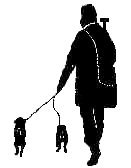 Over at the Regal Vizsla blog, Andrew talks about liking his new European-style hunting leash available from Hogan Leather.
Over at the Regal Vizsla blog, Andrew talks about liking his new European-style hunting leash available from Hogan Leather.
Prothonotary warbler
The weather seems to change every day now, with cold and warm fronts crashing into each other, and the resulting squalls bringing flocks of small birds north on the winds.
The warblers are now beginning to return in droves. They are more visible now than they will be later on when the foliage will obscure them high up in the trees. You have to look carefully among the mixed flocks of returning chickadees, titmice, and nuthatches to find the warblers, but they are there.
Warblers are very important birds, as they are the primary insect eaters in North America's woods. The bad news is that most warblers are in rapid decline over vast portions of the U.S. due to forest fragmentation which is occuring both in the U.S. and overseas where "our" warblers spend the winter. I have written a bit about that in the past.
Something I have not written about before is how warblers have shaped presidential politics. In fact, it is not too much to say that "warbler controversies" have led directly to two presidents being elected to office.
The first president to have his early career shaped by a warbler was Richard Nixon.
Back in 1948, Whittaker Chambers, a senior editor at Time magazine, and a former Communist spy turned government informer, accused Alger Hiss of being a spy for the communists in the mid-1930s.
Chambers was not exactly a credible witness; he had very little documentation to back up his charges and he admitted at the Hiss trial that he had repeatedly committed perjury on other occasions. Inititially it was not clear he had even met Hiss, much less knew him well.
Chambers claimed he did know Hiss, and backed it up by noting that Hiss was a bird-watcher who was very proud that he had seen a prothonotary warbler near Glenn Echo Park just outside of Washington, D.C.
In cross examination of Hiss before the House Committee on Un-American Activities (HUAC), a young Congressman by the name of Richard Nixon asked a seemingly innocent question: "What hobbies, if any, do you have, Mr. Hiss?"
Hiss answered that his hobbies were "tennis and amateur ornithology." Congressman John McDowell then jumped in an asked Hiss whether he had ever seen a prothonotary warbler?
Hiss walked right into the trap, responding that he had -- "right here on the Potomac."
Slam -- the trap had been tripped. Committee members were now convinced it was Hiss who was lying, not Chambers. After a series of trials, Hiss was sentenced to prison for 5 years based on very sketchy (and still controversial) evidence.
As for Nixon, he managed to use the Hiss affair to propel himself from the U.S. House of Representatives into the Senate, and from the Senate into the Vice Presidency under President Dwight Eisenhower.
The rest, as they say, is history.
The saga was was not quite over, however. In 1952, not quite content to let his 15 minutes of fame pass him by, Whittaker Chambers published his autobiography, which was entitled Witness. Ronald Reagan later credited this book with transforming him from a New Deal Democrat into a conservative Republican.
While shilling for General Electric in the 1950s and early 60s, Reagan made frequent references to Whittaker Chambers in his speeches, and on March 26, 1984 -- 23 years after Chambers had died -- Reagan posthumously gave Whittaker Chambers the nation's highest honor, the Medal of Freedom.
Probably no one has ever deserved it less.
Golden-cheeked warbler.
Another President propelled into office on the wings of a warbler was the current President -- George W. Bush.
In June of 1994, a memo from the U.S. Fish & Wildlife Service was leaked. The memo outlined a tentative plan to declare hundreds of thousands of acres across 33 counties in Texas hill country as being "critical habitat" for the endangered Golden-cheeked Warbler.
It was feared that, if implemented, "the plan" would have made it virtually impossible to bulldoze Ashe juniper off of the surrounding hills -- a necessity if those hills were to be turned into nice new housing developments with grass lawns and underground sprinkler systems.
Massive opposition to the informal Fish & Wildlife Service proposal sprang up overnight, with school auditoriums quickly filled to capacity by ranchers, developers, and property owners who were led to believe that the draft proposal was soon going to be made into law overnight, and that it would impact almost all private property.
In fact, the proposal was a mere internal memo within the agency (no rules or regulations had been written or circulated, and no draft Environmental Impact Statement had been initiated), and the designation of critical habitat directly affected only actions that were to be federally funded or authorized, not privately-held lands.
George W. Bush was not a stickler for the facts (then or now) and he jumped on the wave of misinformation circulating through Texas in order to fan the flames of discontent. Positioning himself as a champion of the property rights movement, Bush hammered on the "federal land grab" even after Interior Secretary Bruce Babbitt had disavowed the leaked memo and Texas Governor Ann Richards also voiced her strong opposition.
Richards, of course, was too late. Bush campaign operatives -- including Karl Rove -- had already framed the issue and associated Ann Richards with it -- never mind the facts or her true position.
Texas being Texas, and modern political discourse being what it is, people believed the Bush Campaign's spin.
In the end, due in no small part to the warbler controversy, George W. Bush was elected Governor of Texas, which he later used as a stepping-stone to the White House.
And the rest, as they say, is history.
.
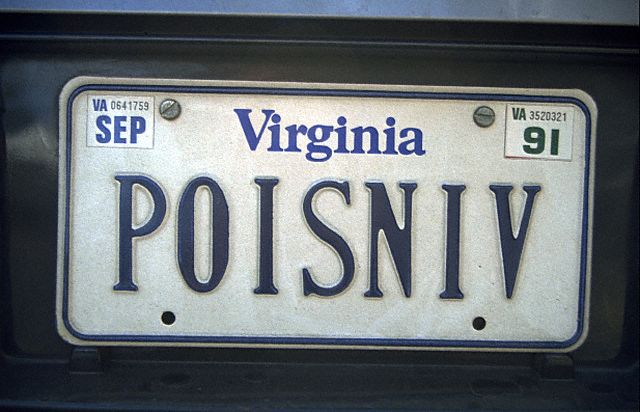
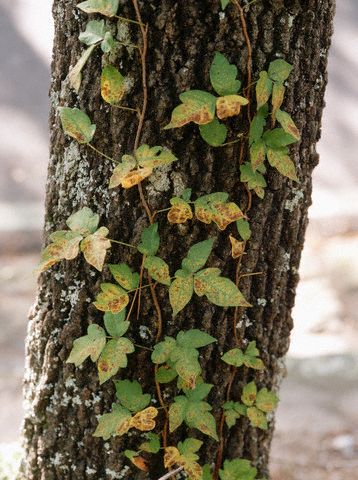

.Pedigree dogs face extinction due to inbreeding
The Telegraph By Jasper Copping May 11, 2008Many of Britain's most popular dog breeds could be extinct within 50 years because they are so inbred, vets have warned.
Some pedigrees are suffering from a range of worsening health problems because they are being bred from a shrinking gene pool in an effort to create the most sought-after physical characteristics.
Many breeds will die out as a result of hereditary diseases, the vets warn.
Emma Milne, the television vet who will address the British Veterinary Association on the subject next week, said: "If things carry on as they are, within 50 years many breeds will not survive. There are breeds with massive welfare problems that are in dire need of action.
"The constant refinements made by this kind of breeding mean they have become cartoon caricatures of what dogs used to be."
Ms Milne, who starred in the long-running series Vets in Practice, said animals were now having to be put down because of hereditary diseases, which had become widespread.
"This isn't natural. They are not really viable breeds but are being artificially maintained. A lot would die if they were not treated. If it carries on like this, veterinary intervention will not be able to save some of them."
Of the more than 200 pedigree breeds in Britain, most now have problems with hereditary diseases.
Among those most at risk are breeds such as the bulldog, which suffers from breathing problems, and shar peis, which are bred with twice as much skin as necessary, and suffer from chronic infections.
Both breeds cost about £1,000 a puppy. The average price for pedigrees is £600.
Dachshunds are increasingly prone to arthritis, because they are bred to have longer bodies and shorter legs, while Yorkshire terriers often need orthopaedic surgery to fix dislocated knees.
Deafness is now common in dalmatians, because the deafness gene is linked to the shape of the spots, for which they are bred.
While great danes and Irish wolfhounds, selectively bred for their massive sizes, have been left susceptible to heart disease and bone cancer and are lucky to live to seven.
Of the two most popular breeds, labrador retrievers suffer from three different hereditary joint problems, six eye and two heart conditions, while English cocker spaniels have five eye and four heart conditions, as well as kidney disease.
A new association has been set up to push for reform of the pedigree dog system.
The Pets Parliament has been established to secure ratification of the European Convention for the Protection of Pet Animals, which has already been signed by more than 20 countries.
The convention highlights a list of breed characteristics that need to be modified for the dogs' best interests and also bans breeding if the two animals share a grandparent.
The move could see some breeds disappear, and alter significantly in appearance, and the move is being resisted by the Kennel Club, which currently registers pedigrees.
Holly Lee, from the Kennel Club, said: "We're aware of the inherited health problems but we're the best placed to deal with them."
 I'm old fashioned, and believe that flea powder still has its place.
I'm old fashioned, and believe that flea powder still has its place. I was about to pull out from work, when I did a last-minute check of my email box and found a note from someone "Re: Your article on inbreeding."
I was about to pull out from work, when I did a last-minute check of my email box and found a note from someone "Re: Your article on inbreeding." So, imagine my surprise to pop open the link and see the art!
So, imagine my surprise to pop open the link and see the art!As I told the fellow from the magazine in an email back, "It's like dog porn, and I mean that in the nicest, most complimentary way possible."
And I really do.  Anyone who is nice enough (and brave enough!) to use anything I write about dogs in a popular magazine gets a plug from me, so here goes: K-9 Magazine is "the UK's leading lifestyle magazine for dog lovers," and the annual online subscription is only £10.00.
Anyone who is nice enough (and brave enough!) to use anything I write about dogs in a popular magazine gets a plug from me, so here goes: K-9 Magazine is "the UK's leading lifestyle magazine for dog lovers," and the annual online subscription is only £10.00.
A quick glance through the online issue found a very interesting-looking article on the origins of working dogs, with an emphasis on coursing breeds (I'm gonna read that tomorrow!), and a glance at the collected covers suggests a simple, commercial concept: Very pretty women holding their dogs. Brilliant! Which reminds me of a story -- sadly, a true one.
Which reminds me of a story -- sadly, a true one.
 Anyway, the next week, I zapped the woman a short email, noting I had just missed her at the Border Terrier fun day.
Anyway, the next week, I zapped the woman a short email, noting I had just missed her at the Border Terrier fun day. 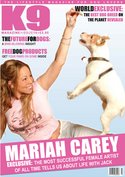
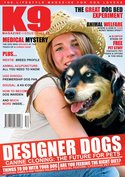
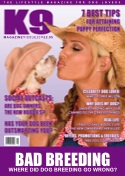

 Walsh's point system (along wih the eugenics theories of Francis Galton) served as the backbone and architectural model of the Kennel Club point system which is used to judge dogs in the ring, and on the bench, to this day.
Walsh's point system (along wih the eugenics theories of Francis Galton) served as the backbone and architectural model of the Kennel Club point system which is used to judge dogs in the ring, and on the bench, to this day.Head
Long and narrow, fairly wide between the ears, scarcely perceptible stop, little or no development of nasal sinuses, good length of muzzle, which should be powerful without coarseness. Teeth very strong and even in front.
Ears
Small and fine in texture, thrown back and folded, except when excited, when they are semi-pricked.
Eyes
Dark, bright, intelligent, indicating spirit.
Neck
Long, muscular, without throatiness, slightly arched, and widening gradually into the shoulder.
Shoulders
Placed as obliquely as possible, muscular without being loaded.
Forelegs
Perfectly straight, set well into the shoulders, neither turned in nor out, pasterns strong.
Chest
Deep, and as wide as consistent with speed, fairly well-sprung ribs.
Back
Muscular and broad.
Loins
Good depth of muscle, well arched, well cut up in the flanks.
Hindquarters
Long, very muscular and powerful, wide and well let down, well-bent stifles. Hocks well bent and rather close to ground, wide but straight fore and aft.
Feet
Hard and close, rather more hare than catfeet, well knuckled up with good strong claws.
Tail
Long, fine and tapering with a slight upward curve.
Coat
Short, smooth and firm in texture.
Color
Immaterial.
Weight
Dogs, 65 to 70 pounds; bitches 60 to 65 pounds

"With U.S. population growing by three million a year, we lose two acres of farmland every minute, according to the American Farmland Trust. Traffic congestion costs drivers $78 billion a year, says the Road Information Project. A serious water shortage is developing nationwide, with aquifers once considered inexhaustible drying up."
Immigration is a very divisive and sensitive issue that nonetheless must be discussed. To those who support generous immigration, I ask you this: Why are you on the same side as Microsoft and the other huge computer corporations, and of Archer Daniels Midland and the rest of the agribusiness lobby? How can you support a policy that helps ensure that our existing poor will never be adequately valued for their labor?
To those who oppose immigration because of racist and/or xenophobic reasons, I say to you: Go to hell. The issue is immigration, not immigrants.
I come to my support of immigration reform from an ecological carrying-capacity perspective. Be it a house, a block, a city, a watershed, a state, a bioregion, a nation, a continent, or a planet; all have a carrying capacity. . . .
The only smart growth is no growth.
Remember Isaiah 5:8: "Woe unto them that join house to house, that lay field to field till there be no place that they may be placed alone in the midst of the Earth."
.... [T]he Oregon we love is like a car speeding toward a cliff. While may disagree on the rate of speed, or the distance left to the cliff, those are details that in the end don't matter.